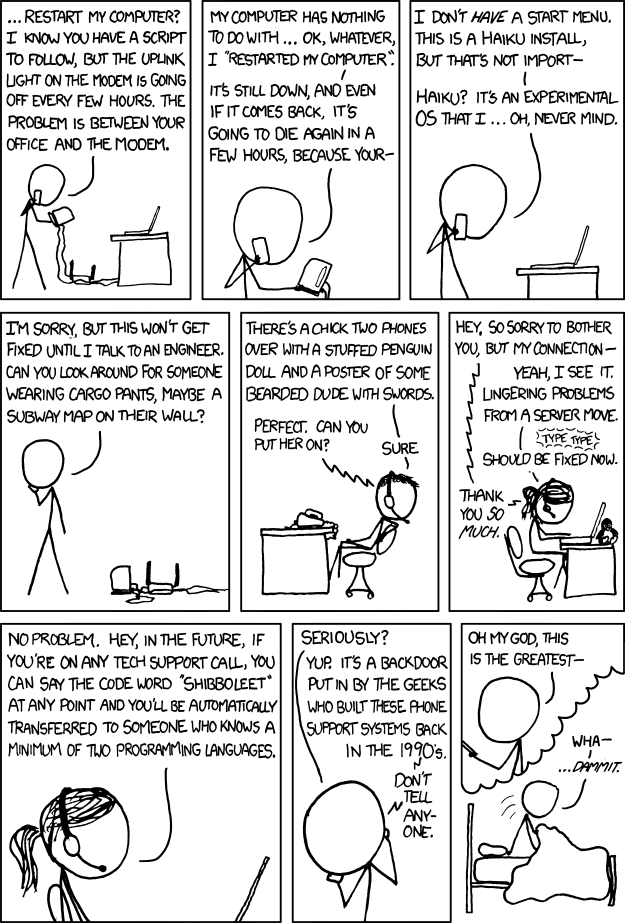-
Posts
693 -
Joined
-
Last visited
-
Days Won
21
Content Type
Profiles
Forums
Downloads
Gallery
Posts posted by Jordan Kuehn
-
-
I've only ever used the RGT for outputting Excel-format files. It has the capability to read as well?
To a degree, yes. You can read the data in from existing files. I suppose it depends on what formatting exists and if it is standard across the different documents on how much you would wind up doing with the toolkit and at which point you'd just grab the activeX references and do it yourself.
-
Write to Spreadsheet file, does not produce an Excel file.
It produces a file that Excel converts into an Excel file (you could open the file with any text editor like Notepad).
Excel files like you need are build using the Excel ActiveX interface, and the Report Generation Toolkit is a method to control that.
However I won't be surprised if there isn't some VBA on the internet (Excel code) to merge Excel files into one file with different sheets per source file.
Ton
exactly.
if you want to do it easily in LabVIEW get the RGT, if not do the ActiveX work. You'll be better off in the long run with the RGT since everyone has a need to export to Excel and you'll just wind up recreating the toolkit.
-
That's why it is called "LabVIEW Embedded Module for Blackfin with C-Gen" or in short "LVBFCGEN".
literally laughed out loud. Thanks for the info though!
-
I think if you are looking for web hosting, you'll find mercurial and bitbucket to work much nicer for you.
-
I'd like to include a screenshot but I can't seem to upload it directly and am having trouble finding someplace to put it where I can just use an URL.
I use imgur.com for quick uploads of images.
-
This is the specific error I keep repeatedly getting, but only when trying to read a channel of the NI 9237. Sometimes it stopps immediately, other times it chugs along nicely for a few readings first.
Error -200284 occurred at Inputs_Read_All.vi
Possible reason(s):
Some or all of the samples requested have not yet been acquired.
To wait for the samples to become available use a longer read timeout or read later in your program. To make the samples available sooner, increase the sample rate. If your task uses a start trigger, make sure that your start trigger is configured correctly. It is also possible that you configured the task for external timing, and no clock was supplied. If this is the case, supply an external clock.
Property: RelativeTo
Corresponding Value: Current Read Position
Property: Offset
Corresponding Value: 0
Task Name: _unnamedTask<A89>
I can get it to run quite a bit longer by daisy chaining two 5-meter USB 2.0 extender cables end-to-end (routed under the door) but then, after enough time, the cDAQ itself momentarily fails to be detected and I get a "device not there" error. So that's no fix either. Alas and alack.
At risk of sounding insulting, are you certain the task is configured correctly? You mentioned that these are new modules to you so perhaps there is something that isn't configured correctly that is giving you your timing issues. It could even be a combination of both. What are the details for your task configuration?
Also, here's NI's breakdown on that error: http://digital.ni.com/public.nsf/allkb/FEF778AD990D5BD886256DD700770103
Of course, it's entirely possible everything is set up correctly, but it never hurts to double check the obvious stuff first.
-
If you are using cDAQ is there a reason you haven't tried the ethernet chassis? I swear there was an 8 slot option, and I also thought they were the same price as USB. I've had good luck with replacing a USB solution with an ethernet one which would be more suited for long routes.
Here you go http://sine.ni.com/n...g/en/nid/208990
The ethernet ones take a little bit more set-up, but work great for longer distances.
-
Some kind of quick feed back to an operator would be nice to get the current state of a system without needing communication to a host.
Exactly! So when a customer calls they can provide useful information about the problem!
-
 1
1
-
-
They give away the software. But not their "rights" to the software.
Exactly.
-
Yup. So how would a piece of software "dual licensed" under "Public Domain" and "Non-Commercial" work?
From the wiki page: http://www.linuxinsi...tory/38172.html
"MySQL states on its Web site, "Our software is 100 percent GPL, and if yours too is 100 percent GPL (or OSI compliant), then you never have to pay us for the licenses. In all other instances, you are better served by our commercial license." They give away the software, yet they make money selling it."
I'm not seeing the problem?
Edit//
Your "work for hire" scenario means the entity hiring the developer owns the license and is free to do with it what they want. This is different than posting your own code to the fora.
-
I disagree.
Licensing can be about relinquishing your rights (like Public Domain-Germany being an exception). That is why you have terms in many licenses like "transfer of rights" and "non-exclusive rights". Once you have relinquished them, there is no going back and saying "actually I'm now going to make it share-like" - it won't hold in a court of law (nothing to stop you trying, though). Since a license is linked to a product. You can create a new product, but the onus is then on you to prove that the new product under the different licence is dissimilar enough to warrant being termed a "different product" if it is ever contested.
It is quite possible (and there have been cases) that you can write some software, transfer your rights via licencing or indeed grant rights to others that supersede yours so you (as the author) are no longer able to distribute, modify or even talk about the software. A simple case of this is the pre-emptive "work for hire" clause in most software developers contracts. If a developer never relinquished any of their rights to the software regardless of any licencing or contract, businesses would never be able to own anything.
-
Reminded me of this:
-
You could store these data paths on disk in a file. Quickest solution would be to have your data_viewer.exe monitor the file for changes and update itself as needed. Alternatively, without the add_file_to_data_viewer.exe you can use an event structure in your main program that monitors for a value changed event on a front panel boolean. When this event fires you can prompt the user for a file path dialog and update your path list as needed. If you want your list to persist between executions it is still good to save it to disk and load it during initialization.
-
Completely agree, but I do like at least having the Properties option instead of having to modify every single thing individually. Gets annoying when the customer decides they want an extra decimal place on a few dozen indicators.
-
In the Vision Assistant there is a 'Performance Meter' that will give you some timing information regarding each step in the process. That should at least get you started. If you pursue this, I would love to know what you come up with.

-
well considering I have just made one of these things and everything sports related is dominating it all I would respond:
- just fine
- could be more technical/descriptive
- fine by me, but I'm no expert
- just now
- just fine
-
There is no performance impact from the depth or breadth of a dynamic dispatch hierarchy. The time needed to dispatch to the correct implementation is constant regardless of the number of classes in memory, the number of methods that a given class has or the number of overrides for a particular method.
I see that you are not a fan of the serial comma.
That aside, thank you for the clarification.
-
Thanks for posting these. Downloading now.
If you are using firefox, fireftp is my preferred FTP client. Pretty lightweight and integrates within firefox.
-
I'm relying on HG. Have never really worked with Git since I'm happy with HG.
Since you don't have the time to dive into the SCC system you want to use I would advice you to go with HG, it's just harder to mess up.
I haven't had stability issues with HG (Workbench).
What are you going to setup as a server? If you have the time (approx. half a day), setting up rhodecode on a linux server is a good idea. It gives you user management and a web-interface beyond the shipped webserver of HG.
Ton
+1 to Rhodecode
-
Opera reacts differently for the right mouse button per tab-indicator.
Ton
Regardless, there is an established behavior that would make this approach, well, approachable.
-
What are you trying to protect, and from whom? If there's an attacker who can read arbitrary memory locations or get access through VI server, seems to me they'd just install a keylogger and get your passwords for everything, not just the LabVIEW application.
While I do think you have a point, it does seem to me that this is at least an interesting topic to discuss, how to make a secure application. I have made some tools that have very simple authentication as it was more for simplifying displays and such rather than protecting anything important, but I could certainly see the need for a more robust authentication system. I wish I had answers, but I do like the questions.
-
For some reason the VI snippet is showing up as an image.
It finally worked, I had to right click and save target. Although I've been using Labview for a long time, I didn't really use snippets before. Thanks.
I believe in LAVA the image in a forum post is a thumbnail and you can either 'save target' like you did, or click on the image and then 'save image'.
-
There is a Real-Time Deployment Library
I didn't know they had moved on from the older RTAD. Thanks for the link!
-
Congrats!




LabVIEW Architect
in Certification and Training
Posted
Congrats!